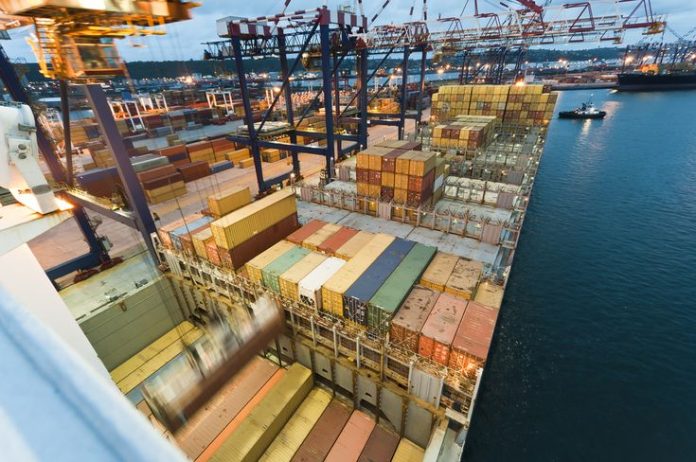On September 30, 2025, the African Growth and Opportunity Act (AGOA) officially expired, closing a 25-year chapter of U.S.–Africa trade relations that had defined the export trajectory of dozens of African economies. The agreement, first signed in 2000 under President Bill Clinton, granted more than 30 sub-Saharan African countries duty-free access to the American market for thousands of products. In its wake, industries from Kenyan apparel to South African citrus, from Madagascar’s vanilla to Lesotho’s garments, face an uncertain future, with new tariffs threatening jobs, investments, and entire value chains.
The impact is immediate and uneven. Kenya, one of AGOA’s biggest textile beneficiaries, exported $600 million worth of apparel to the United States in 2024. That trade now faces tariffs of up to 28 percent, undermining the very cost advantage that allowed Nairobi’s factories to compete with Asia’s low-cost giants in Bangladesh and Vietnam. Already, United Aryan EPZ Limited, one of Kenya’s largest apparel exporters, has announced it will shed 1,000 jobs; a 10 percent cut in its workforce. Nationwide, more than 66,000 jobs, many held by women in Nairobi’s industrial zones, are now at risk.
Read also: Meat production responsible for 60% of food emissions, yet rarely covered in climate news
Lesotho, a small but deeply AGOA-dependent economy, offers a similarly stark picture. Garments account for more than 40 percent of the country’s exports, the bulk of them previously duty-free to the U.S. Now facing tariffs of around 15 percent, factories that employ tens of thousands of workers, in a country with one of the highest unemployment rates in southern Africa, are bracing for closures. Madagascar, whose textile and vanilla sectors had flourished under AGOA, will confront tariffs as high as 47 percent, threatening to derail its hard-won recovery from previous political and economic instability.
South Africa, a more diversified economy, is not spared. Its auto industry, which exported thousands of vehicles annually to the United States under AGOA, and its booming citrus sector, which supplied American supermarkets with fruit during the northern hemisphere’s winter, now face steep levies. Industry groups warn of declining competitiveness and job losses that could cascade through supply chains, from smallholder farmers in Limpopo to auto component suppliers in Gauteng.
These figures paint a sobering picture. Analysts at the German Institute of Development and Sustainability estimate that 1.3 million jobs across Africa are directly linked to AGOA-supported industries. While some economies may withstand the shock through diversification, smaller and more dependent states like Lesotho and Eswatini could face disproportionate hardship. In a continent where formal employment opportunities are already scarce, the ripple effects on poverty, food security, and migration should not be underestimated.
The expiration of AGOA also coincides with a broader recalibration of global trade. The United States, under President Donald Trump’s administration, has signaled a shift toward protectionism, with blanket tariffs of 10 percent or more applied to imports across the board. For African exporters, this adds another layer of uncertainty, reducing the margin for negotiation and narrowing the space for preferential treatment. At the United Nations General Assembly last week, Kenyan President William Ruto pressed for a five-year extension of AGOA, arguing that the pact “connects Africa and the U.S. in a very fundamental way.” Washington has floated the possibility of a one-year renewal, but no legislative action was taken before the deadline.
Yet amid the uncertainty, the end of AGOA is also forcing a critical strategic pivot. For too long, Africa’s export models have been heavily oriented toward external preferences — whether Europe’s Everything But Arms initiative or Washington’s AGOA. The expiration highlights the structural vulnerability of relying on external markets without building competitive domestic and regional ecosystems. Most of Kenya’s apparel exporters, for instance, still import the bulk of their fabric from Asia. High energy costs, limited transport infrastructure, and fragmented value chains further erode competitiveness. The loss of duty-free access does not just expose these weaknesses; it demands that they be addressed.
In this context, the African Continental Free Trade Area (AfCFTA) assumes greater significance. With 54 signatory states and a combined market of 1.5 billion people, AfCFTA offers a framework for building intra-African trade, scaling industries, and reducing reliance on volatile external agreements. Policymakers and trade economists argue that AGOA’s end could accelerate regional industrialization if governments seize the moment to harmonize tariffs, invest in energy and transport infrastructure, and strengthen value-added production.
At the same time, Africa is deepening its engagement with other partners. Trade with China reached $295 billion in 2024, far eclipsing AGOA-linked trade with the United States, which stood at $8 billion. India, Turkey, and the European Union are also expanding their footprints on the continent, often with fewer political conditions attached. China’s decision to eliminate tariffs on exports from 33 African countries underscores the shift in trade gravity eastward. While this diversification brings opportunities, it also raises new questions about sustainability, industrial dependency, and bargaining power.
For Africa’s sustainability agenda, the lesson is clear. Trade policy cannot be divorced from long-term resilience. Whether in apparel, agriculture, or automobiles, Africa must not only seek market access but also build industries that are energy-efficient, climate-smart, and regionally integrated. A just transition in trade means ensuring that the machinist in Nairobi, the smallholder citrus farmer in Limpopo, and the garment worker in Maseru are not left stranded by shifting global policies. It also means recognizing that industrialization, when underpinned by sustainable practices, is central to achieving the continent’s climate and development goals.
The end of AGOA, then, is both a disruption and a reckoning. It exposes the fragility of Africa’s dependence on a single trade framework but also opens the door to a more self-directed and sustainable future. Whether this becomes a moment of decline or renewal will depend on the political choices made in African capitals, and on the continent’s ability to leverage its own market, its own resources, and its own people to drive inclusive and resilient growth.
Read also: Civil Society unveils priority actions to curb deforestation finance ahead of COP30






